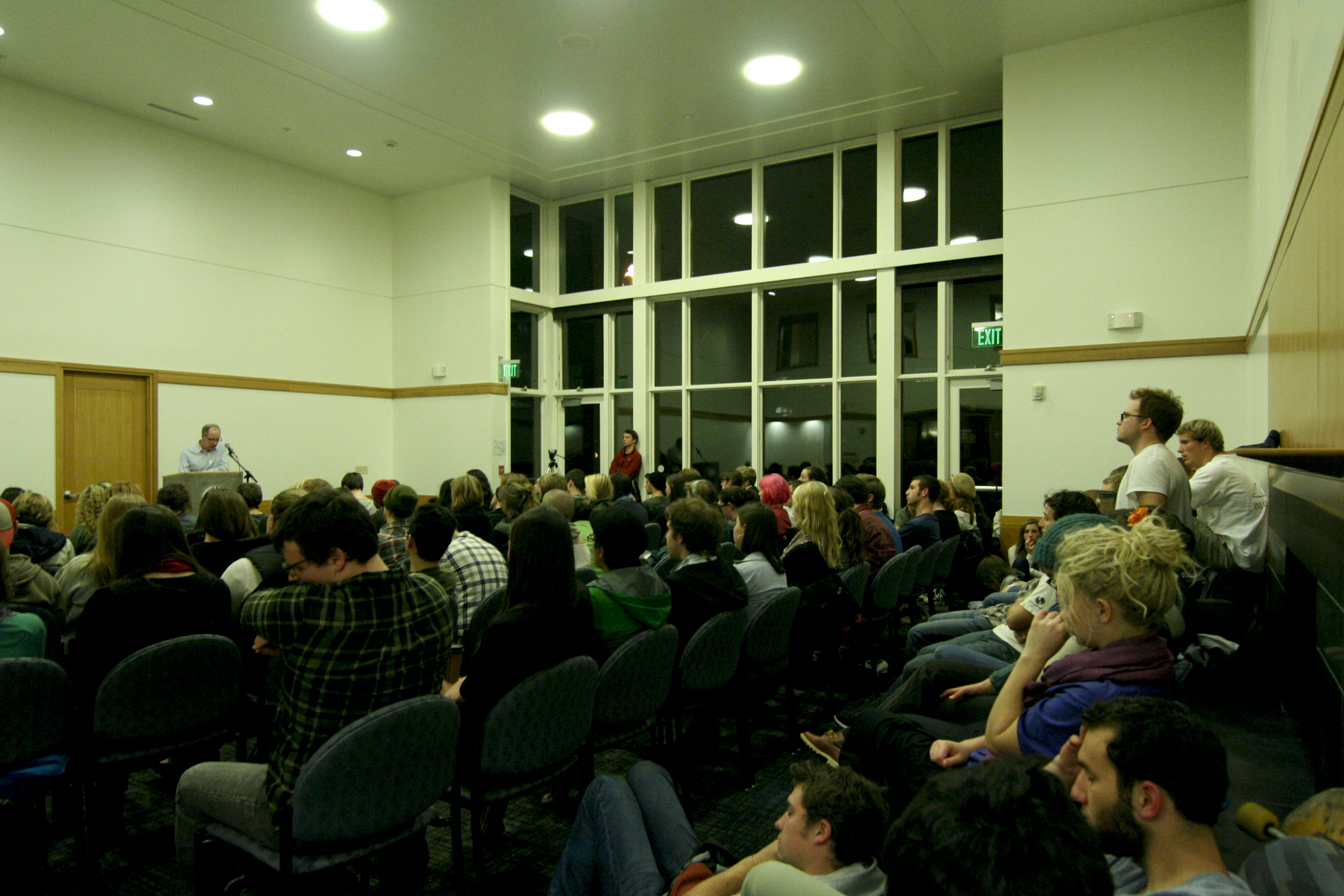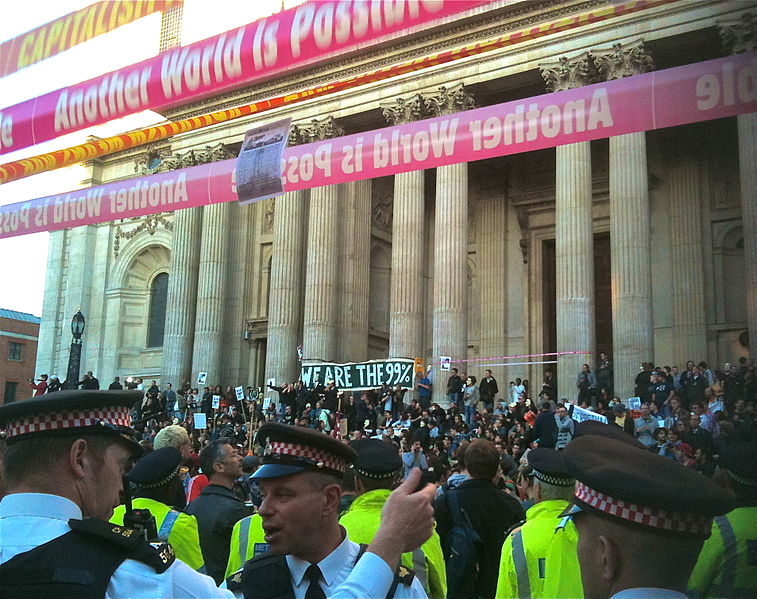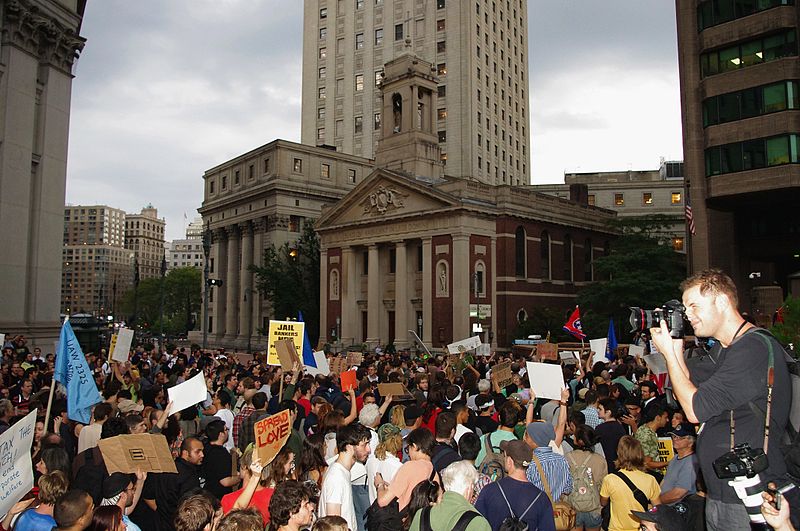On Sept. 17, 2011, an estimated 5000 people assembled in downtown New York to protest corruption in the financial system.
This movement, known as Occupy Wall Street, attracted a great deal of attention across the nation, though reactions were mixed.
A Gallup poll conducted Oct. 2011 found that 63 percent of Americans did not know enough to say whether they supported the movement’s goals. This was likely due to Occupy’s lack of a clear message.
The movement was characterized by individualism, but attempts to unite the protestors under a single, defined goal were met with resistance. Writing for the Chronicle of Higher Education at the time of the protests, Dan Berrett said, “The [Occupy] movement has repeatedly been described as too diffuse and decentralized to accomplish real change.”
David Graeber, an ethnographer involved in organizing the movement, seemed valid as a potential leader for the protests. Yet he declined to take on such a role, and said, “We don’t want to create a leadership structure. The fact I was being promoted as a celebrity is a danger. It’s the kids who made this happen.”
Graeber’s reference to “kids” underscores the perception of Occupy as a youth-driven movement.
To be certain, the Occupy movement has passed its prime. While the first protests attracted thousands to downtown New York, the anniversary protest held one year later only attracted a few hundred people.
Moreover, Occupy has not accomplished any legislative victories. In an article for the LA Times about Occupy’s one-year anniversary, Andrew Tangel said “the movement cannot claim any new policy, law or regulation as its own. Unlike the Tea Party on the political right, there is no cohesive Occupy group promoting candidates in November’s national election.”
The Tea Party movement is an apt comparison. The Tea Party emerged in 2009 with protests aimed at reducing taxes and government spending. Like Occupy, the Tea Party did not organize under a single leader.
However, several politicians, such as Rep. Michele Bachmann (R-Minn.), emerged to support the movement. The Tea Party channeled its energies into supporting politicians like Bachmann, and as such they have become a major force in Washington politics.
The Tea Party caucus, for example, has 49 members in the House. These numbers do not include Tea Party affiliates who declined to join the caucus.
There have been many notable youth protests in the 20th century. The Student Nonviolent Coordinating Committee (SNCC) played a major role in the Civil Rights movement. Student protests against the Vietnam War were a common occurrence in the 60s and 70s.
So why is it that the most visible youth movement of today fell apart so quickly and accomplished so little?
Perhaps youth activism cannot thrive in the economic climate of today. Activism requires time and energy, both of which are in short supply for a generation graduating college with massive debt.
The Student Strike of 1970 involved millions of student protestors across the country, far more than were involved in the Occupy protests.
However, the Student Strike occurred in a time when college was far cheaper. Bloomberg reported on Aug. 26, 2013 that college tuition costs have increased over 500 percent since 1985. The youth of today face great pressure to focus on establishing their financial health.
Occupy may also have failed due to the protestors’ inability to form a coherent message. The organizers of the movement sought a leaderless movement.
Berrett said that Occupy’s key characteristics were “its decentralized nature and its intensive process of participatory, consensus-based decision-making.”
Occupy was rooted in a desire to avoid hierarchy. Yet all great movements rally behind famous leaders.
The Civil Rights movement is inseparable from the image of Dr. Martin Luther King, Jr; Gandhi did the same for the Indian protests against British rule.
Even the most famous collectivist movements followed leaders: the Bolsheviks rallied behind Lenin; the Chinese communists, Mao.
Occupy had neither defined goals nor recognizable leaders. It is therefore no surprise they failed to maintain momentum.
While Occupy did not follow the Tea Party’s example and score legislative victories, they did raise awareness about income inequality and corruption in the financial sector.
A Pew poll published Sept. 12 showed that 63 percent of Americans believe the U.S. economy is no more secure than it was before the 2008 market crash.
The same poll found that many Americans believe government policies since the crash still cater to higher income Americans: 41 percent believe that large corporations have benefitted greatly from government policies since the crash and 40 percent believe that banks have benefitted greatly. By contrast, only 8 percent believe that poor people have benefitted, with 6 percent saying the same about the middle class.
The Occupy movement may be dead, but its attitudes toward income inequality linger.



